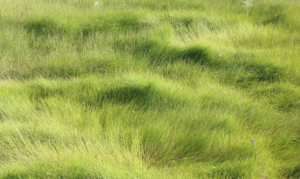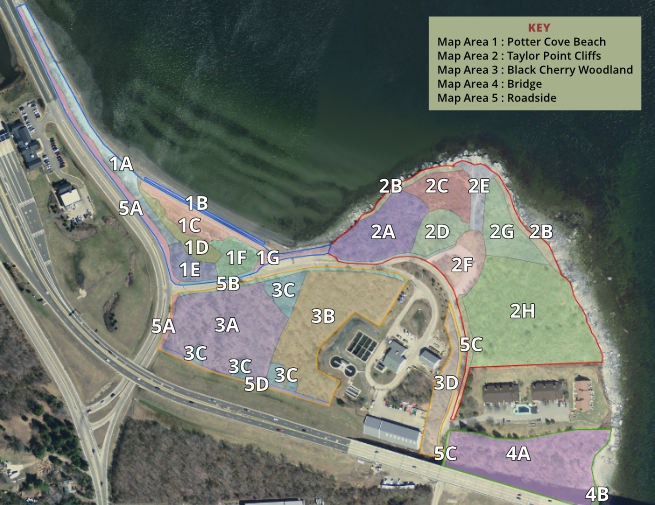Common Name: Saltmarsh Hay, Salt-hay Grass
Specific Name: Spartina patens
Known Occurrence at Taylor Point:
Map areas: Beach 1A, Beach 1C
Category: Native, Grass

Ecological Considerations:
Spartina patens is a slender, wiry grass found along the upper reaches of slain to brackish coastal salt marshes, often where it is covered at times by high tides and along sandy beaches and low dunes, tidal flats and marsh ridges. It grows in thick mats 1 to 2 feet high, and is bright green in spring and summer, turning light brown in late fall and winter. The hollow stems have leaves on one side that roll inward. The plant produces wheat-like flowers and seeds only on one side of the stalk. The flowers are deep purple from June to October and turn brown in late autumn and winter.
Salt hay provides rich habitat for juvenile and adult crustaceans, mollusks, and birds, and serves as a major source of organic nutrients for estuaries in general. The salt hay mats become inhabited by small animals and provide food source for ducks and other waterfowl. Salt hay marshes also serve to filter pollutants from coastal waters and buffer the marsh coastline from flooding and shoreline erosion.
Map areas where this plant can be used for revegetation: 1C, 1E
Propagation Mechanisms/Strategies for Encouraging its Establishment: Due to its sparse seed production, salt hay is usually propagated by vegetative stem divisions. Depending on the energy affecting the planting site, either containerized (high energy sites) or bare root (mild energy sites) plants can be planted. Bare root material should contain 3 to 5 stems per planting unit and should be used in areas of little to no wave energy. Alternatively containers should have at least 5 to 8 healthy stems, planted in higher energy zones. Hand planting using spades or planting bars is the preferred method.
Spartina patens stems and rhizomes grow well when well-balanced commercial fertilizers are applied.
Best Planting Practices/Options and Pros and Cons of Options:
Key Issues Regarding its Ecology ( e.g. Which Invasives Threaten it, What Conditions Favor it):
Associated Ecological Benefits: Spartina patens serves many ecological functions including providing food and cover for fish, shellfish, birds, and small mammals; erosion control; wave energy absorption; shore stabilization; and pollutant filtration.
Availability of Locally Sourced Seeds and Plants:
http://www.sylvannursery.com
Case Studies of Native Plant Establishment Efforts/Lessons Learned:
Additional photos:



Sources cited:
URI Restoration
Wiki S. patens
USDA Fact Sheets
Key Words:
Native Grasses/Sedges/Rushes;
Saltmarsh hay
Spartina patens
